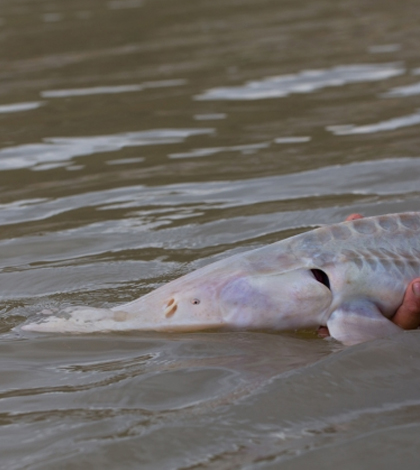Cause for declining Missouri River pallid sturgeon found in ‘major breakthrough’

Researchers with Montana State University, the U.S. Geological Survey and the U.S. Fish and Wildlife Service have detailed for the first time the mechanisms responsible for declining populations of the Missouri River’s pallid sturgeon, according to a release from the school. The fish has been on the endangered species list for the last 25 years.
The cause, according to scientists, is the rise of oxygen-depleted dead zones that have increased in frequency between dams built on the upper Missouri River. Without oxygen, many hatched sturgeon simply can’t survive to adulthood, something that is defined at about 15 years of age for the prehistoric species.
“We’re basically talking about a living dinosaur that takes 20 years to reach sexual maturity and can live as long as the average American,” said Christopher Guy, a scientist with the USGS, in a statement. “After millions of years of success, the pallid sturgeon population stumbled and now we know why. From a conservation perspective, this is a major breakthrough.”
With the results, all of which are published in the journal Fisheries, scientists say those involved in managing the Missouri River’s reservoirs need to find new operational approaches that can help reduce dead zones and spur recovery of the pallid sturgeon stock. New dams could be built with reducing oxygen depletion in mind, they add, while older ones may be able to adopt streamlined methods to better support fish needs downstream.
Top image: Study looks in to the decline of Missouri River pallid sturgeon. (Credit: Chris Guy / USGS)





0 comments